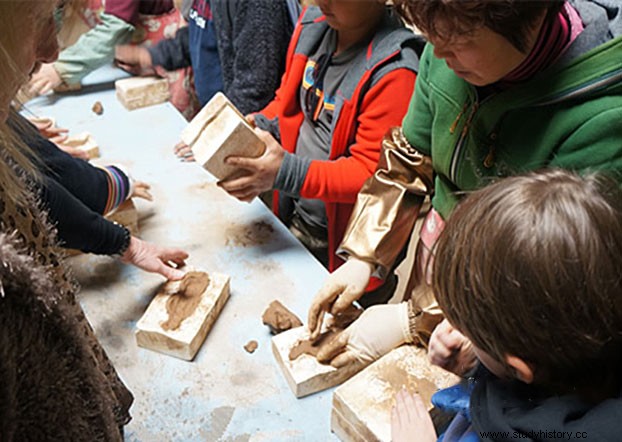China is also a very ancient civilization, Egypt, Babylon and India. The most populous country today. China has a deep culture with 3600 years of written history. China has a large and varied landscape. Moreover, the unique and harmonious existence fascinates the whole world. The Terracotta Army was built in Xi'an. The capital of Shaanxi Province Xi'an is a place of great attraction for foreigners. Furthermore, it is also known to be the birthplace of Chinese civilization. This ancient city of Xi'an was the capital of thirteen imperial provinces at one time. The constructions left by the first king of this have been restored to this day. Located in north-central China, overlooking the Silk Road, Xi'an has existed since ancient times as a large flourishing area in modern times.
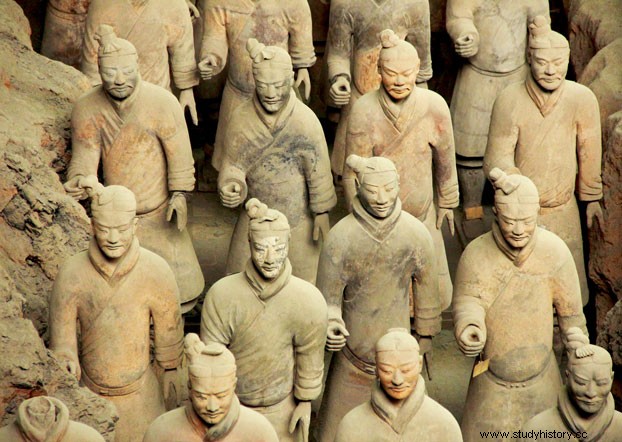
Why Terracotta Army?
An attraction you must see in Xi'an is Terracotta Army . It is a myth about the afterlife that existed in antiquity. Even after his death, the first emperor had his tomb surrounded by thousands of terracotta-like models, horses and chariots. These detailed models were replicas of Qin ShiHuang's soldiers. While buying the tomb of the first emperor, the models of the army were also buried. Approximately 720,000 246 workers were employed for the construction of these ancient relics in 206-XNUMX BC
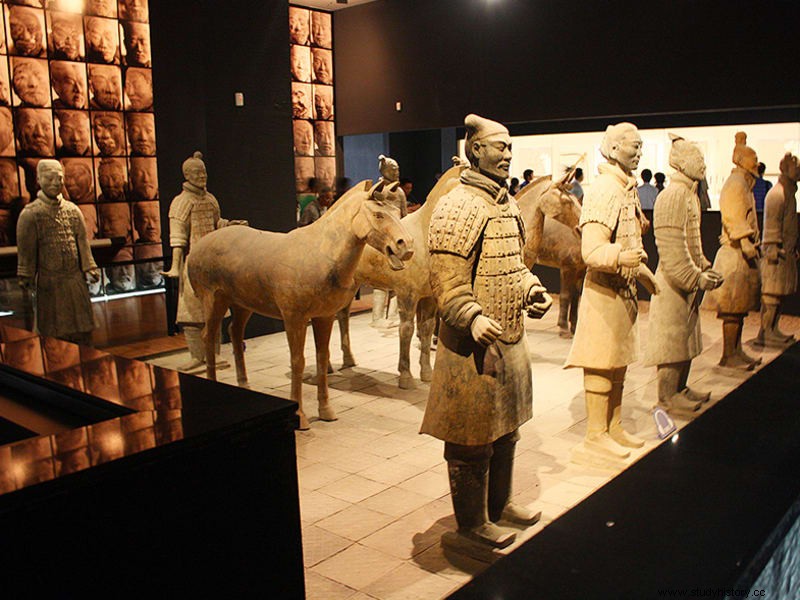
Who invented the idea of the terracotta army?
The idea evolved from the wishes of the first emperor of the Qin dynasty. Han has Qin Shi Huang. He reunited China after ten years of fighting with warring states. Probably the name China came from his name. In addition, his reign over the Qin Dynasty varied between 226 and 203 BC. He remained unpopular due to his triumphant nature. He killed millions of people and burned valuable literature to appear the most effective. During his reign, the court gave him more power and wealth.
After his death, he wanted his army to follow him in the light of life after death. Unlike other dynasties, he preferred false people, known as the Terracotta Army. Not only the army Qin Shi Huang completed the construction of the Great Wall of China before death.
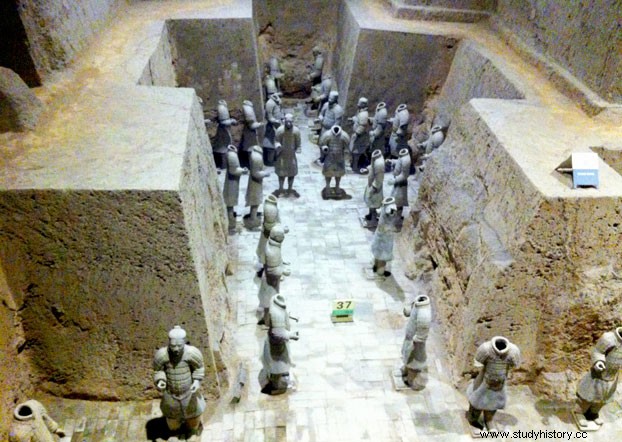
Brief Background of The First Emperor
Legalism was the political philosophy the people of Qin believed in. It refers to centralized control of the Qin dynasty as well as the strengthening of public power. Huang was born in the Qin Dynasty when there were already plans to conquer the warring states. Huang's predecessor was already preparing for war. They built a huge structure, and persuading people to join the army was a part. Furthermore, people began to prepare advanced weapons that could be used.
Qin Shi Juang was born into the Qin community and soon adopted the political philosophy. He was the son of the reigning king of the Qin kingdom. Soon he rose to power and prepared for retaliation.
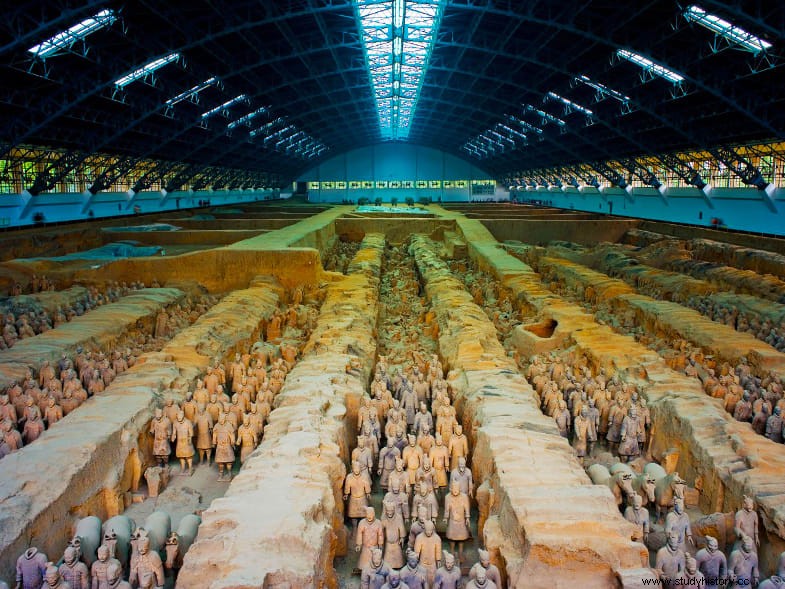
The legacy of the first emperor to found Terracotta Army
- Qli's jurisdiction existed for over 15 years. Qin's court was able to restore harmony among the people. They earned great standardization 0f money, measurement. Currency etc. Besides, they built a huge infrastructure. Regions later flourished based on the major construction projects that Qins implemented.
- Not everything was good. Millions died to build such a large structure. It was a population decline of 50 percent. A lot of old literature was destroyed. Then trained scholars who opposed were killed.
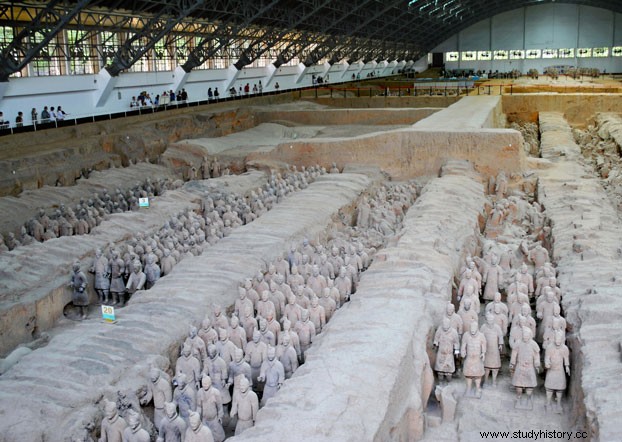
Attractions within the terracotta army and the horse museum
In addition to the exhibition hall, there are three more vaults / pits to be seen. You will see the bronze carriages in the exhibition hall which is still full of tourists. It was allowed for visitors' entry in 1979. Furthermore, you would be able to get the best view of the vault / pit from the front corners.
- The first vault / pit is the most impressive and largest of all. Furthermore, it is as big as a flying hook. The statues of the soldiers totaling 6,000, just under 2,000, are on display. The statues depict the economic, cultural and military forces of the time. In particular, all the soldiers are facing the east side as if the opponents are approaching from that end. Each of the army's soldiers has weapons such as spades and daggers. Ride a horse.
It has been found that the soldiers form a rectangular arrangement with the vanguard forming the easternmost column. The soldiers were arranged around all sides of the tomb. All the soldiers have different expressions, as do the outfit and the hairstyle. It shows that the parts were made elsewhere before they were placed on site. Behind them, the main armies of horse-drawn carriages were found.
Dimensionally, the vault / pit is 120X62 meters long. Furthermore, the pits under the ground vary 4.5 or 6.5 meters. Nine corridors made of earth walls in a gap of 2.5 meters can be found.
- In the second vault / pit, the mystery behind the army's formation of the uncovered is revealed. It is located 20 meters from the first vault / pit. It has built up areas of each 6000 square meters and 5 meters, depth. Kneeling and standing archers can be seen in the first row. Carriages from the second series. The third is a mixed matrix. Carriages, infantry and troops are arranged in a rectangular manner. The last row consists of the troops standing with weapons in hand. It was founded in 1976.
- The third vault / pit is the smallest. There are around 68 terracotta figures, many without heads, but clearly defining their figures. Some are without precedent. But the attire represents that they belong to the command post.
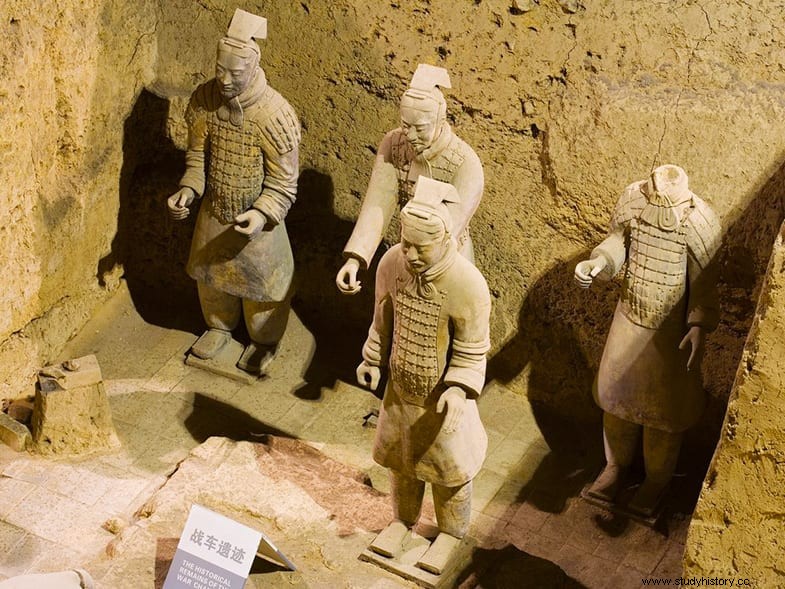
Description of Bronze Chariots
There are two carriages on display in the exhibition hall. They were found in December 1980 just west of Qin Shinuang's tomb, just 20 meters away. Also, these carriages were properly restored before they were shown. Four horses were engaged to pull the cart. Furthermore, each carriage has 3400 parts. Dimensionally, the second carriage is 1.06 meters high and 3.17 meters long.
The horses that pull the cart are made of bronze. The weight of each of them is 1,234 kg. Although the length is fixed, ie 120 cm, the gold and silver ornaments also love the carriage. 1720 ornaments, weighing 7 kg, are available. Inland, the carriages are reputable as the most pressed bronze relic of all time.

History of Terracotta Army
Construction of the terracotta army began in 246 BC. Furthermore, the intention was to protect the tomb of the first emperor. The first emperor died in 210 BC. Around 702,000 XNUMX skilled workers completed the task and took forty years to complete. The discovery of the Terracotta Army was made by a farmer in 1974. While excavation pit 1 was discovered. Further excavation is in 1976, where pits 2 and 3 were revealed. A museum was built at the excavation site which was opened to the public in 1979. In addition, the tomb of the first emperor and the terracotta army were declared a World Heritage Site in 1987. The auxiliary museums mushroomed after 2011.
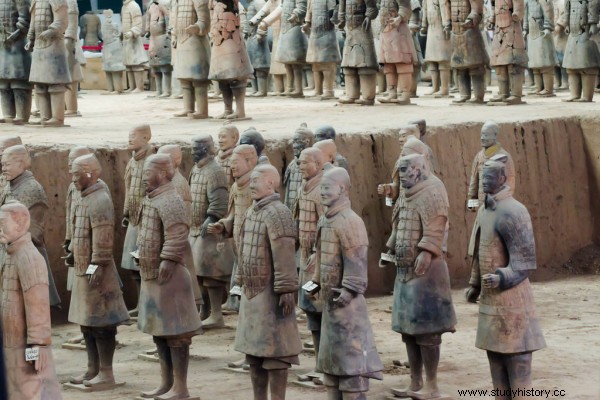
Why the Terracotta Army
To protect the emperor in the afterlife, the terracotta armies were built. During his lifetime no matter what military power he had wanted to continue the same after his death. He had a strong military force that helped him unite China, as well as warn neighboring countries from interfering. Even after death, he wanted power to be with him. Earlier traditions involved human burial along with the emperor's death. The human sacrifice in particular was common to Zhou and Shian races. Omits the human sacrifice part, T he Terracotta Army was buried to imitate the ancient culture.
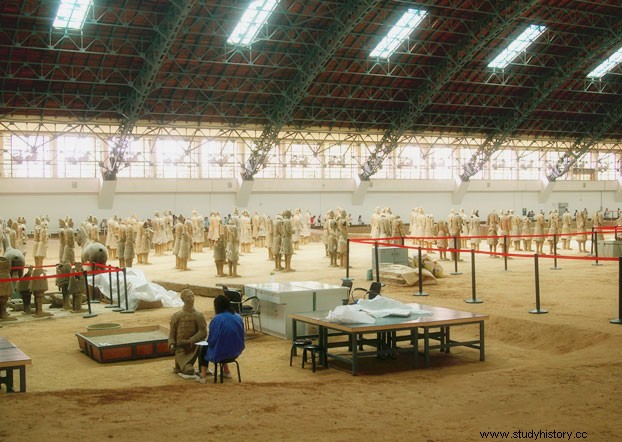
How was the Terracotta Army built?
From the headless figures, the body was found to be intact. After detailed research, archaeologists identified how the life-like figures were made. All body parts were made separately, mainly using molds. Then they were put together on the spot. Clay was applied to the joints and left for artists for hairstyles and clothes. Further finishing of the heat treatment was done to solidify more. Later they were brightly painted. However, the paint has faded over time. Almost after 2000 years of burial.
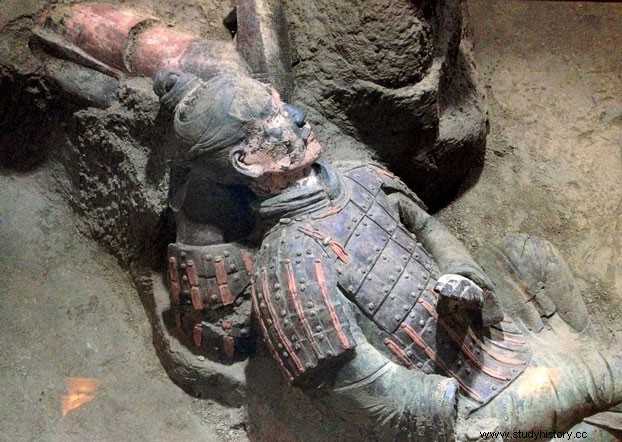
Distinctive features of Terracotta Army
According to the rank, the characteristics of the characters changed. In addition, clothes, facial expressions and hairstyles also changed.
- Faces:There are eight types of faces adopted in rank. Also, every style adopted was Chinese. Furthermore, the shape of Terracotta Army is narrow and elongated.
- Hairstyle reflected a lot on social status and ranks in antiquity. The hairstyle of the armies depends on ranking as well as service arms. Usually two types can be seen. One with hair tied in a bun formation on the right side of the head. The second type is to cover the hair with a plate and then use a cloth cap to cover up. To tie up the bun band. Sticks or ribbons were used.
- Dress:Dress patterns shown in the figures are different. From the pattern of attire you can identify the military service he performs. For the general, under the armored cloak, there were two layers of cloaks inside. To prevent chest, back or shoulder injury, the armed cloak was worn. Their shoes had a square shape, slightly wet and curved pointed. Only one general could be traced from pits 1 and 2. Similarly, the armored warriors had armored clothing covered with turtlenecks. To protect against head injuries, caps that were heavily armored were also designed.
The cavalrymen can be identified from pillbox caps. They have scarves around their necks. In addition, they have light armor at the front and rear. Their shoes are especially soft, round on the toes are round to avoid getting injured while boarding. Furthermore, the drivers who regulate the horses needed special protection. The extended arms and hands were at greater risk of injury. In addition, they wore helmets to protect their necks
- Weapons:The figures were mostly found equipped with real weapons. You could find daggers, swords, spears, etc. Made of bronze. From the sharpness of weapons found today, it is clear that they were treated for rust protection and longevity. Incredibly, the weapons survived 2000 years.
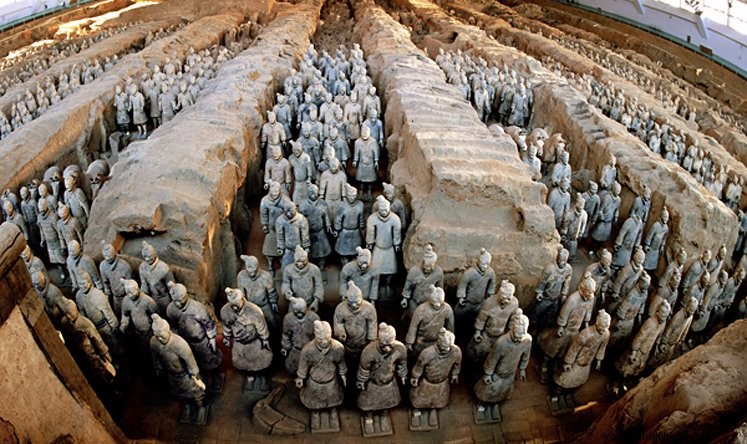
New laws for visitors to Terracotta Army Museum
It should be noted that new rules have been imposed since 1 May 2019. To control traffic, the museum has introduced a ticket system with real names. Tickets will be issued to 65,000 tourists per day. Allows only one and a half hours. To confirm your visit and slot machine, it is suggested that you make a pre-order online.
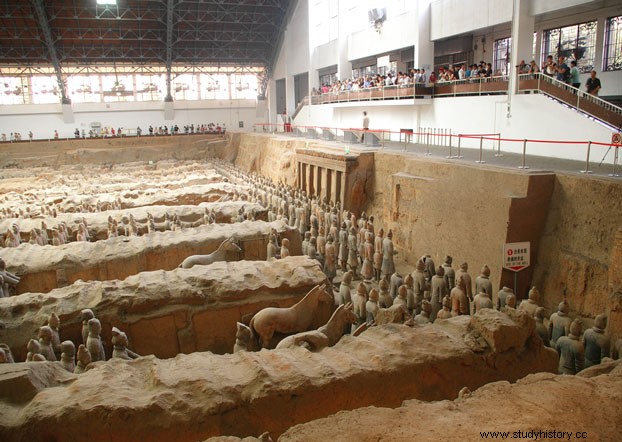
Frequently Asked Questions about Terracotta Army
Q1. Why is it named Terracotta Army?
A 1. The reason it is named so is that the life-like figures are made of a special clay called Terracotta. Furthermore, their orientation of figures is according to their role and duty.
Q2. Why was the Terracotta Army built?
A2. It was a demonstration of the status of the emperor. These characters were expected to serve him in his afterlife.
Q3. How many soldiers, horses and chariots have been excavated to date /
A3. Much more needs to be dug out. However, 8000 soldiers, 130 chariots and 670 horses can now be seen.
Q4. How old is the Terracotta Army?
A4. These were made in the time of Qin Shi Huang (the first emperor) ie almost 2200 years ago.
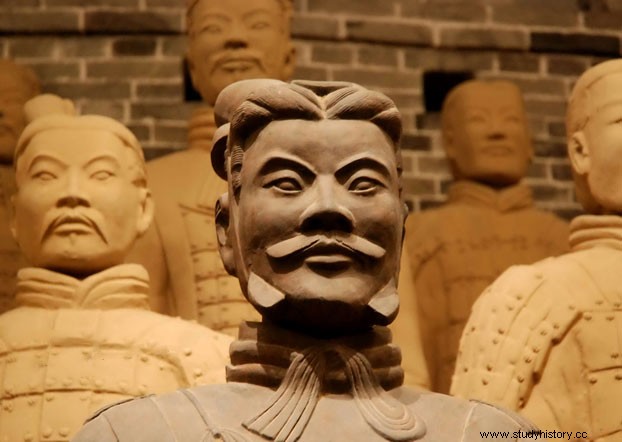
Frequently Asked Questions for Visitors to the Museum
Q1. How long do you need to complete the visit?
A1. 3 hours is preferred, but new regulations may cost you less
Q2. Expected visit without a queue?
A2. On weekday afternoons, the best time to avoid queues. Most people take a lunch break during this time.
Q3. Whether photography will be allowed in the museum?
A3. As long as you do not use the flash camera or tripods, you can take pictures indoors
Q4. Is it possible to plan a day trip to the Terracotta Army tour from Beijing or Shanghai?
A4. Yes, it is possible to use flights early in the morning and departure at night. Alternatively, you can take night buses to Xi'an and from Xi'an.
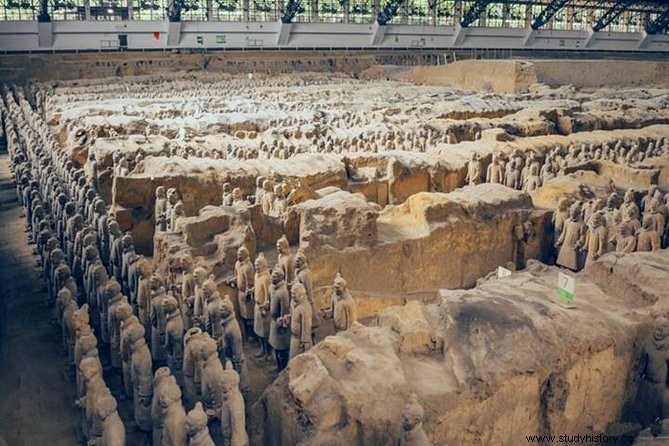
the conclusion
Visiting China will remain incomplete if you do not visit Xi'an. The latter is a place that houses many cultural monuments. Also, the restoration process is noticeable. Visitors is about the glorious history of the emperor in the old days. The first emperor Qin Shihuang has built the Great Wall of China as well as the Terracotta Army which has fascinated visitors from earlier times. Ancient historical sites such as the Terracotta Army have become known in part. With the foregoing, excavators may encounter further surprises.
